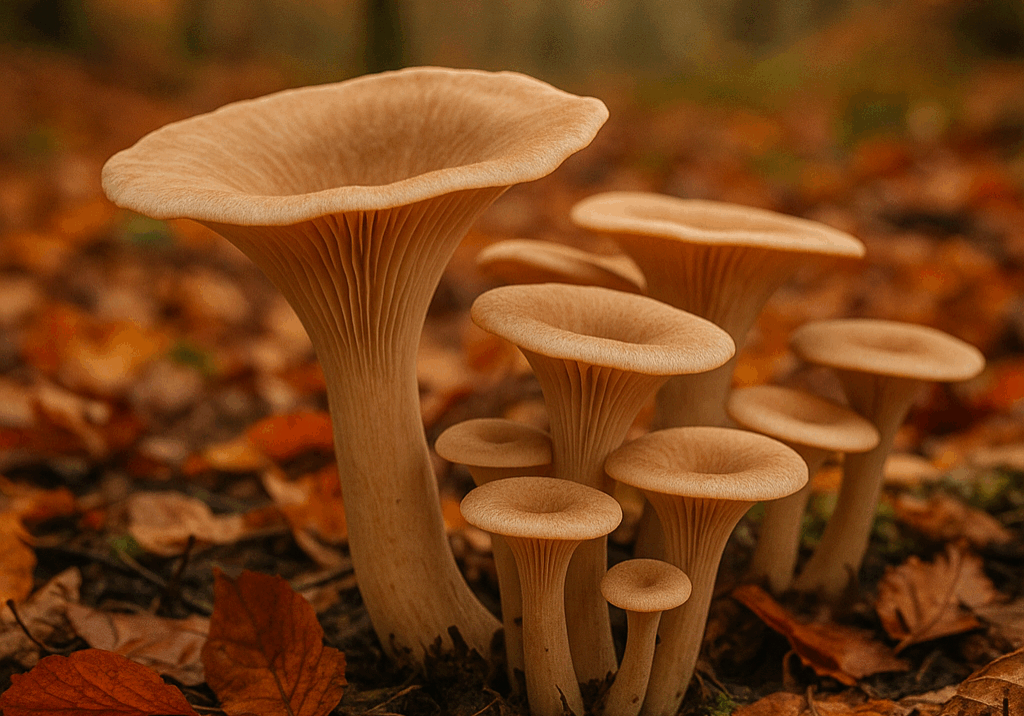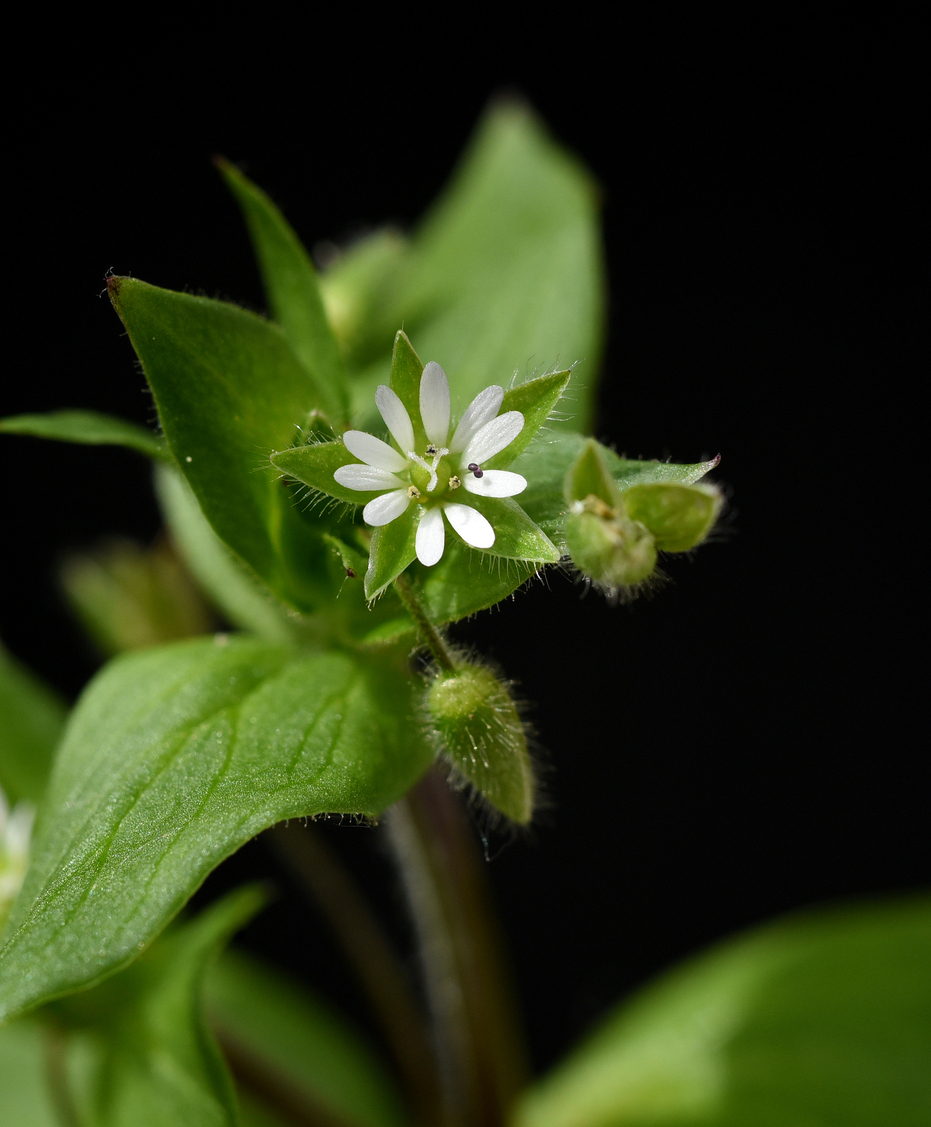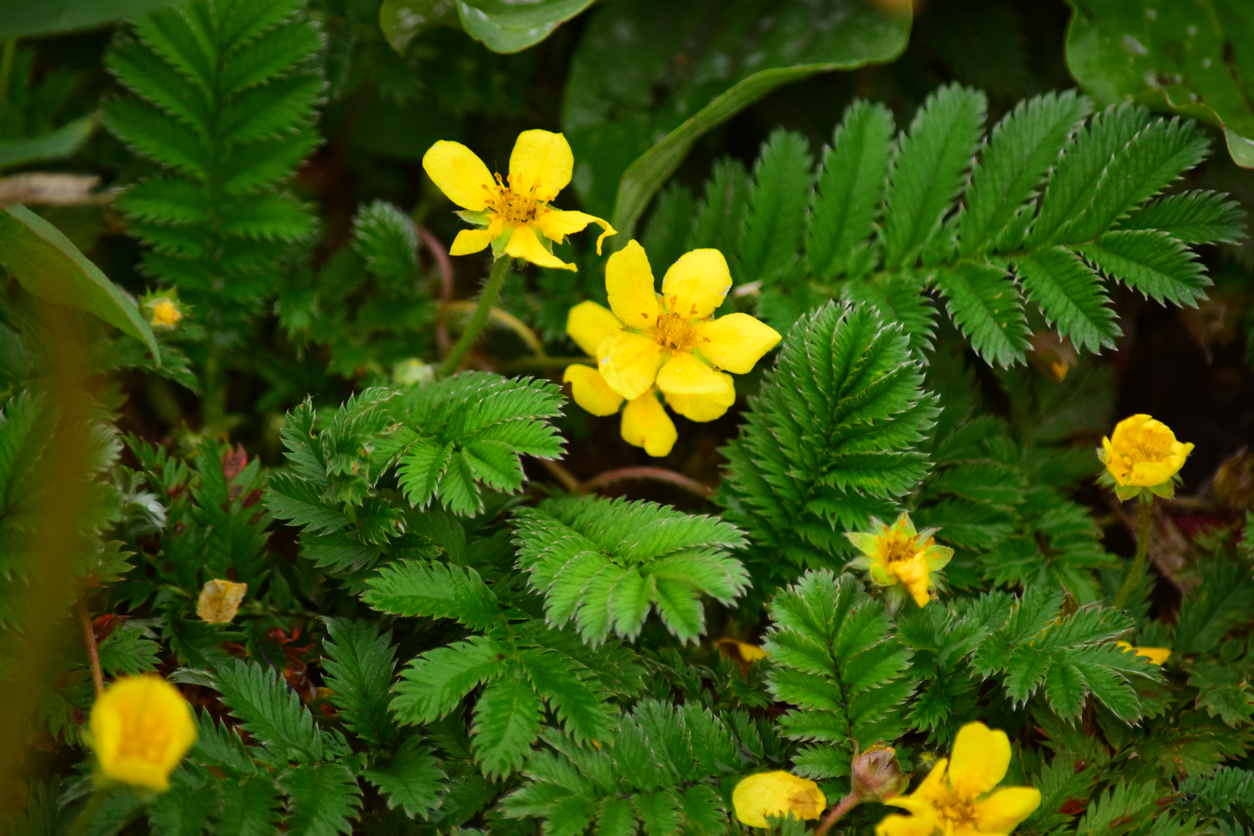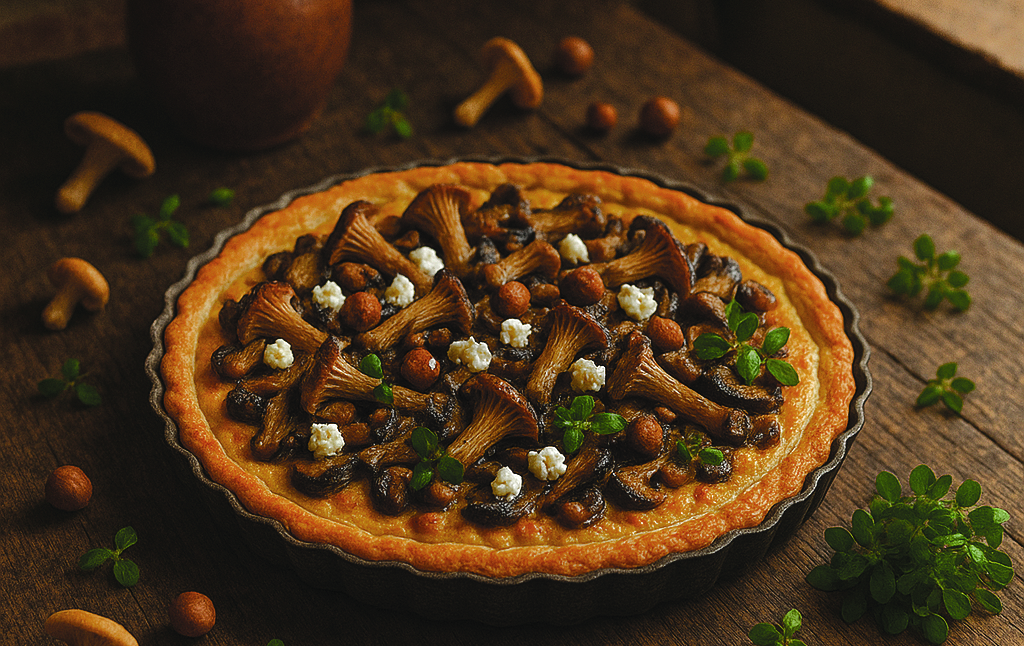
Rooted in the Present
by Pete Compston
OUR RESIDENT FORAGING FANATIC PETE COMPSTON TAKES US BEYOND THE BUSINESS OF DAY-TO-DAY LIFE TO FIND CALM IN THE PRESENT
In autumn’s quiet, foraging draws us back to the present. Among mushrooms, leaves, and seeds, we find not just food, but focus – each small detail and invitation to pause, notice, and belong fully to the moment before us.

Pete Compston
It’s a curious thing, how often we’re somewhere else even while walking in the most beautiful of places. We step into a woodland or across an open field, but our thoughts wander: tomorrow’s to-do list, last week’s conversation, the low hum of worries and plans. The body is present, but the mind is elsewhere.
Foraging teaches us to look closer, listen deeper, and reconnect with the moment we’re in.
Yet something changes when we begin to learn the wild foods around us. The moment we bend to notice the fine gills of a mushroom, or the silver shimmer on the underside of a leaf, we’re pulled gently but firmly into the here and now. The plants and fungi demand our attention, not in loud voices, but through detail, texture, and scent. You cannot identify a Trooping Funnel without seeing its tall, funnelled cap from every angle. You cannot gather Chickweed without feeling the threadlike stem that splits so neatly. You cannot find Silverweed without noticing its soft silver leaves glinting in the low autumn light.
And it’s not just the smaller details of the hedgerow and field that call us closer. Autumn is also a perfect time to deepen our relationship with the trees. To the casual eye, they may seem to be withdrawing, retreating into sleep. But in truth, their greatest work is happening unseen. Sending energy down into roots and mycelium, strengthening connections with their underground communities, and weaving the networks that will sustain them through the long months ahead. Just as we, in our own quieter seasons, may seem still but are busy with the inner work and weaving connections within our communities, the very bonds that keep us strong.
In this way, foraging is one of nature’s simplest lessons in presence. It roots us in what’s before us, teaching us to look closer, listen deeper, and reconnect with the moment we’re in. And in autumn, when the land offers both abundance and reflection, that lesson feels all the more profound.
This season, let’s walk together with three quiet companions of the hedgerows and meadows: Trooping Funnel, Chickweed, and Silverweed. Each has something to teach us. Not just about flavour, but about noticing, remembering, and being fully here.
Trooping Funnel (Clitocybe geotropa) – The Gentle Giant of Autumn

Trooping Funnel
Trooping Funnels are one of those mushrooms that, once you’ve seen them, you’ll never forget. They grow in great arcs and troops, sometimes forming vast fairy rings across fields and woodland edges. With their tall, creamy-white stems and broad, pale caps that deepen into elegant funnels as they mature, they look almost ceremonial, as if the forest itself had set a table.
Unlike some autumn fungi that demand caution, Trooping Funnels are relatively easy to identify for those who pay attention. Their caps are pale buff to cream, often up to 20cm across, with decurrent gills running down the stem. They give off a pleasant, nutty aroma, and their stature, often towering over the grass makes them stand out even from a distance.
One of the clearest identifiers is the pronounced raised umbo in the centre of the cap, a feature that helps distinguish Trooping Funnels from other large Clitocybe species, many of which lack this characteristic bump.
In the kitchen, they are a gift. The flesh is firm and meaty, perfect for slicing into hearty autumn dishes. Sautéed, they release a gentle, earthy flavour that pairs beautifully with fresh greens and starchy roots. They can also be dried for later use, their flavour deepening with time.
As always, careful identification is crucial. Look for the tall, elegant funnel shape, decurrent gills, and the pale, even colouring. When in doubt, leave it out. But once you know them, Trooping Funnels can become a trusted friend for the autumn table.
Chickweed (Stellaria media) – The Star of the Hedgerow

Chickweed
Delicate yet persistent, Chickweed is a plant that quietly thrives almost everywhere. Pathsides, garden edges, open fields. Its name comes from its long use as a nutritious green for both people and poultry, but it has much more to offer than its humble reputation suggests.
“Chickweed has long been used to cool fevers, soothe inflamed skin, and support digestion”
The leaves are small, oval, and bright green, growing opposite each other along a fragile stem. Run your fingers along that stem, and you’ll feel the single fine line of hairs running its length. A telltale detail that sets it apart from lookalikes. In the centre of each star-like white flower are petals so deeply cleft they look like ten instead of five.
Nutritionally, Chickweed is a powerhouse, brimming with vitamins A and C, along with minerals like iron and magnesium. Its flavour is mild, fresh, and almost reminiscent of baby spinach, making it one of the best wild greens for eating raw. In folk medicine, Chickweed has long been used to cool fevers, soothe inflamed skin, and support digestion.
To me, Chickweed is a reminder that abundance often hides in plain sight. Where others see a weed, the forager sees a generous friend offering nourishment at every step.
Silverweed (Potentilla anserina) – The Forgotten Root of Our Ancestors

Silverweed
Silverweed is one of those quiet treasures that most walkers pass without a second glance. Creeping low to the ground, it sends out runners that root wherever they touch, creating a silvery-green carpet along pathways, meadows, and damp verges. Its name comes from the soft, downy undersides of its feathered leaves, which catch the light like brushed silver when stirred by the wind.
Though humble in appearance, Silverweed was once a vital food plant of our ancestors. Long before potatoes arrived from the Americas, its starchy roots were dug up, roasted, or boiled, providing much-needed sustenance.
“Using Silverweed today you connect with a thread of human history almost forgotten”
In parts of Scotland and Ireland, they were known as seachdamh aran—the “seventh bread”—a reminder of their role as a reliable fallback food when grain stores ran thin.
The leaves, though less well known, are edible too. Tender when young and offering a mild, slightly earthy flavour.
In folk medicine, they were valued for their astringent qualities, soothing sore throats and easing digestive complaints. Their creeping runners were even said in folklore to mark the paths of the fairies, leaving a silver trail for those who knew how to see.
In using Silverweed today, whether adding young leaves to salads, or gently roasting a few roots, you connect with a thread of human history almost forgotten. It is a plant that speaks quietly of resilience, adaptability, and the subtle richness of the overlooked.
RECIPE: Autumn Wild Greens & Trooping Funnel Tart with Goat’s Cheese & Hazelnuts

This dish is autumn on a plate. Earthy mushrooms, tender wild greens, creamy goat’s cheese, and the nutty crunch of sanctuary of healing patiently awaits our toasted hazelnuts. It’s rustic yet elegant, easy enough for a weekend meal but special enough to serve when you want to impress.
Ingredients:
- 200g plain flour
- 100g butter (or plant-based alternative)
- 1 egg yolk (or cold water for a vegan pastry)
- Pinch of salt
For the filling:
- 1 large handful Trooping Funnels (Clitocybe geotropa), cleaned
- and sliced
- 1 handful Chickweed (Stellaria media), washed and chopped
- 1 handful Silverweed (Potentilla anserina), young leaves,
- washed and chopped
- 2 small onions, finely sliced
- 1 clove garlic, minced
- 3 eggs
- 200ml cream or oat-based alternative
- 100g soft goat’s cheese
- 40g toasted hazelnuts, roughly chopped
- A drizzle of olive oil
- Salt & freshly ground black pepper
- A pinch of nutmeg (optional)
Method:
- Make the pastry: Rub the butter into the flour and salt until it resembles breadcrumbs. Mix in the egg yolk and a splash of water if needed. Form into a dough, wrap, and chill for 30 minutes.
- Preheat the oven to 180°C. Roll the pastry, line a tart tin, and blind bake for 10 minutes.
- For the filling: In a pan, heat a little olive oil. Sauté the onions gently until soft and golden. Add the garlic, then stir in the Trooping Funnels. Cook until tender, about 5 minutes.
- Add the chopped Silverweed and Chickweed, stirring just until wilted. Season lightly with salt, pepper, and a touch of nutmeg.
- Whisk together the eggs and cream. Season well.
- Spread the mushroom and green mixture evenly in the pastry case. Crumble over the goat’s cheese, then pour in the egg and cream mixture. Sprinkle the toasted hazelnuts across the top.
- Bake for 25 minutes, or until the filling is set and lightly golden.
- Allow to cool slightly before slicing. Serve warm with a crisp autumn salad or a drizzle of herb oil.

At Pendle Plant Craft, we believe every wild meal is an opportunity to connect—with the land, with each other, and with the richness already around us. And the best way to stay safe when foraging is to learn how best to care for nature.
Find us at Pendle Plant Craft, join one of our walks, or pick up a copy of our new book, Thirteen Cycles Toward Nature’s Wisdom. Let’s keep learning from the land and from the plants who know how to give without taking.
ColneLife Autumn 25




